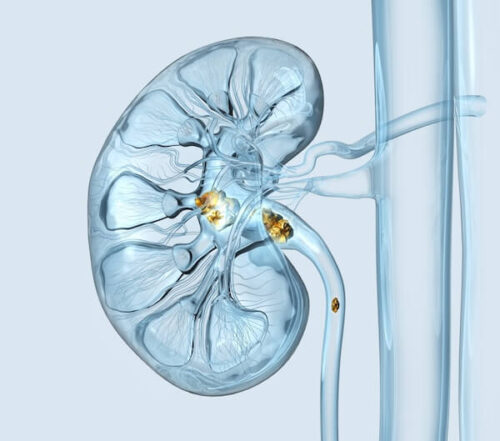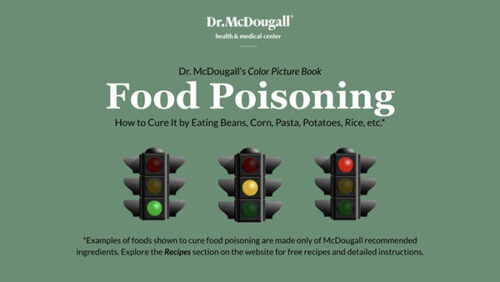Larry King Live on Prostate Cancer Screening (PSA) Show Sets a New Standard for Disease Mongering

Larry King Live on Prostate Cancer Screening (PSA)
Show Sets a New Standard for Disease Mongering
Friday, August 21, 2009, the CNN television show, Larry King Live, turned thousands of otherwise healthy men into patients and caused them irreparable harm when in-studio guests John McEnroe, Michael Milken, and Dr. Christopher Rose recommended that all men over the age of 40 years undergo PSA examinations in order to find prostate cancer. (This show can also be found free on iTunes as a podcast and as a transcript.) I know Larry King personally. I was a guest on his national radio show 3 times in the distant past. He is an honest man, but I believe he was duped into selling for the prostate cancer businesses at the expense of men’s health on this particular evening.
The show touched the viewers’ emotional cords with live and recorded testimonies from high profile men with a history of prostate cancer detected by the PSA testing. Former Secretary of State General Colin Powell, Los Angeles Dodger manager Joe Torre, radio talk show host Don Imus, actor Charlton Heston, actor Jerry Lewis, golfer Arnold Palmer, New York City Mayor Rudy Giuliani, Senator John Kerry, Senator Bob Dole, and General Norman Schwarzkoff all told of their bouts with prostate cancer and the apparent benefits they received from early detection and the treatments that followed. TV personality Merv Griffin also appeared in a video clip, but as an example of ‘the foolish patient’ who ignored his doctors’ recommendations and paid with his life. (From this long list you might think all older men have prostate cancer.) Viewers were told that with modern techniques the dreaded complications of incontinence and impotence are now rare. The guests were unopposed in their unified message for all men over 40 to get tested—there were no phone calls taken during the hour.
|
Early Detection for Prostate Cancer: PSA and DRE There are two tests that are commonly recommended by doctors for the early detection of prostate cancer: The PSA and DRE. Prostatic Specific Antigen (PSA) is a substance made exclusively by the prostate gland. Chemically, it is a sugar and a protein molecule (glycoprotein), which naturally leaks out into the bloodstream. The PSA test measures the level of this substance in a man’s blood. Inflammation (prostatitis), enlargement (benign prostatic hypertrophy), and cancer of the prostate can result in elevated test results. The PSA test is far from foolproof. It can be normal when there is cancer—about 15% of men with a normal PSA are found on biopsy to have cancer. On the other hand, approximately 2 out of 3 men with an elevated PSA level will not have prostate cancer. But the higher the level of PSA, the more likely cancer will be detected on biopsy. A cancer must grow to the size of 1 centimeter (cm) or about a half inch, before it is large enough to make the PSA rise above normal levels (above 4 ng/ml). The digital rectal examination (DRE) is a physical examination of the patient’s rectum performed by the examiner’s finger. Through the wall of the rectum the doctor can feel the prostate gland in a man. In most cases, the cancer must be the size of a small marble (1 cm) for the doctor to feel an abnormality. It takes approximately 10 years for a tumor to grow to the size of 1 centimeter—a size large enough to detect by PSA or DRE. By this time if it is advanced prostate cancer it has already spread beyond the boundaries for surgery and radiation to prevent death. If it is the much more common latent form then it will likely never threaten a man’s life. |
To his credit, host Larry King attempted to bring up the controversies surrounding prostate cancer screening using prostate specific antigens (PSA) and digital rectal exams (DRE), and the treatments that follow—but his challenging comments were always dismissed by his guests. Possibly Mr. King was aware that many of the opinions expressed during this hour-long show were wrong and opposite to the recommendations for PSA testing held by the American College of Preventive Medicine, British Columbia Office of Technology Assessment, the Canadian Cancer Society, the U.S. Preventive Services Task Force, and other industry-independent organizations.
|
Who’s Recommending PSA Testing? Organizations Against (or Not Supporting) PSA Testing: American College of Preventive Medicine Organizations Supporting PSA Testing: American Urological Association This list is incomplete; however, note that special interest groups representing the prostate cancer industries support PSA testing. |
Follow the Money
By no coincidence the primary support for early detection of prostate cancer through PSA testing comes from medical trade organizations. The best example is the American Urological Association, representing the special interests of over 16,500 members (mostly people from areas of urology and oncology) and funded by industries such as GlaxoSmithKline, Lilly, Novartis, Pfizer, and many other companies that derive their income from men with prostate cancer.
All three in-studio guests on this Larry King Live show have financial ties to prostate cancer industries. John McEnroe is an official spokesperson for a drug company, Michael Milken works with pharmaceutical industries through his Prostate Cancer Foundation, and Dr. Christopher Rose is a radiation oncologist and serves as medical director of The Center for Radiation Therapy of Beverly Hills. Undeniably, widespread PSA testing means more profits for doctors, hospitals, laboratories, and device and pharmaceutical companies.
A time line suggests this particular Larry King Live show on August 21, 2009 may have been a promotional piece designed to sell the drug Avodart for the pharmaceutical giant GlaxoSmithKline (GSK). On March 16, 2009 it was announced that McEnroe had teamed up with GSK to ask men to see a doctor in order to learn their PSA levels. On April 27, 2009, the results of the REduction by DUtasteride of prostate Cancer Events (REDUCE) trial were announced at the American Urological Association meeting in Chicago, Illinois.
In this study, dutasteride, an inhibitor of the prostate-stimulating androgen 5-alpha-dihydrotestosterone, was shown to reduce the number of men with prostate cancer found on biopsy by about 5%. GSK sells dutasteride as Avodart. With these results from the REDUCE trial, the marketing challenge now becomes finding the customers; in this case, men with marginally elevated PSA levels. In order to do this men must be encouraged or frightened into going to their doctors to request an order for the test. That is exactly what the Larry King Live show accomplished. John McEnroe did his job well. With approximately 1,300,000 viewers daily, this show definitely added to the 218,900 men who are diagnosed annually with prostate cancer in the United States. This discovery of an elevated PSA might benefit men except for the fact that present day treatments of surgery, radiation, and chemotherapy (androgen deprivation) have not been shown to save lives (approximately 27,050 men died in 2007 of this disease).
|
is the selling of sickness that widens the boundaries of illness and grows the markets for those who sell and deliver treatments. It is exemplified most explicitly by many pharmaceutical industry-funded disease-awareness campaigns—more often designed to sell drugs than to illuminate or to inform or educate about the prevention of illness or the maintenance of health—Disease mongering turns healthy people into patients, wastes precious resources, and causes iatrogenic (induced by a physician) harm. Ray Moynihan |
Why PSA Testing and the Treatments that Follow Fail
On the surface it would appear that the early detection of cancer in the prostate by any means would result in a longer life for men with less risk of dying from prostate cancer. However, research finds otherwise. The first report from the Prostate, Lung, Colorectal, and Ovarian (PLCO) Cancer Screening Trial on the effect of screening with prostate specific antigen (PSA) testing and digital rectal examination (DRE) on the rate of death from prostate cancer was published in the New England Journal of Medicine, March 26, 2009—PSA and DRE saved no lives. The second landmark report, published in the same issue, was from Europe and it showed an absolute reduction of less than 1 death in every 1000 men getting PSA tests. There are two reasons why PSA testing fails to save lives: first, extremely few biopsy-proven cancers are life threatening, and second, early detection is a myth.
Worldwide the incidence of prostate cancer, found by microscopic examination of the prostate at autopsy, occurs in about 30% of men over the age of 50 years. In the USA the rate of microscopic prostate cancer is even higher at all ages: 8% of men in their 20s, 30% of men in their 30s, 50% of men in their 50s, and 80% of men in their 70s. However, for most men these cells that look like cancer will never noticeably spread, and therefore, never threaten a man’s life. Larry King apparently knew this; he twice asked his three guests, ‘Is it a myth you die with it, not of it?’ (The quote is: ‘many more men die with prostate cancer than from it.’)
Even though prostate cancer eventually occurs in most men, it has an extraordinarily small risk of killing the patient: the death rate is 226 per 100,000 men older than 65 years. The very common innocuous cancers are referred to as latent cancers. The cancers that kill are referred to as advanced cancers. Unfortunately, doctors cannot tell by looking at the prostate tissues under the microscope whether or not the cancer will ever become life threatening. As a result, almost all men found with either type of cancer will be treated aggressively: surgery, radiation, castration, and/or chemotherapy.
As tragic is the fact that those men who have the more aggressive, advanced form of this disease also fail to benefit from treatment because in this case the discovery with PSA or DRE is far too late for current treatments to be of any help. After about 10 years of growth, when these two tests become positive, the average cancerous mass inside the prostate is about one centimeter in diameter, or about the size of an eraser on the end of a pencil, and consists of about one billion cells. As you can see, ‘early detection’ is a myth and a misnomer—three-quarters of the growth of the advanced form of this disease has already happened unbeknownst to the patient or his doctor. In those rare cases, when this is truly the ‘killing kind of prostate cancer,’ by the time of discovery, at 10 years of growth, it has already spread throughout the man’s body.
The Real Harms of Diagnosis
When you agree to take a PSA test you are gambling for the possibility that the test will detect a cancer that can be successfully treated and give you more quality years of life. Think for a moment. You are placing your bet on an extremely small chance of a theoretical benefit that may occur in the far distant future. If your PSA test is positive (there is a 10% chance it will be) and the biopsy results reveal cancer (there is more than a 30% chance it will) then the harms that follow are immediate, real, life changing, and for all men discovered (100%).
Simply being diagnosed with cancer changes a person forever. New policies for health and life insurance are no longer available. Finding desirable employment is less likely. Once the diagnosis is made the label of ‘cancer victim’ sticks for life. Daily reminders come from family, friends, doctor’s visits, and stories in the media about cancer. Worry and anxiety dominate the patient’s and his family’s life. His future becomes a question mark. Every body pain is interpreted as a recurrence. The cancer victim becomes isolated from the rest of the world.
Then there are the side effects from the treatments. The Prostate Cancer Outcomes Study reported that urinary leakage (incontinence) was more common with radical prostatectomy (35%) than with radiation therapy (12%) or androgen deprivation (11%). Erectile dysfunction occurred frequently after all treatments (radical prostatectomy, 58%; radiation therapy, 43%; androgen deprivation, 86%). Incontinence means wet pants, diapers, and sometimes lifelong need for a catheter in the man’s bladder. The results of the Prostate Cancer Outcomes Study are conservative. Likely, more than 80% of prostate cancer patients develop erectile dysfunction, regardless of whether they have surgery or external radiation therapy. And these are only two of the many side effects that occur from the best that medicine has to offer the man with a positive PSA test.
Turning Healthy People Into Patients
Pharmaceutical-industry sponsored celebrity awareness-raising campaigns are used to sell drugs to naive customers. The star of the sitcom Frasier, Kelsey Grammer, and his wife, promoted GlaxoSmithKline’s irritable bowel syndrome drug Lotronex on the Today Show; film and television star Cybill Shepherd sold a menopausal supplement for Novogen on Oprah Winfrey; former governor of Texas, Ann Richards, promoted the menopausal medication Evista for Lilly on Larry King Live; and most recent and most irritating, actress Sally Field, a frequent Oprah guest, advertises Boniva for strong bones for Roche, all day long with her TV commercials.
The August 21, 2009 episode of Larry King Live on prostate cancer raised the bar for pharmaceutical-industry sponsored celebrity awareness-raising campaigns by its highly successful mixing of professionalism, commercialism, and entertainment in order to capture the male viewer for the marketplace. Certainly more men were harmed by this advertisement than any other campaign I know about. If you feel a similar disgust then you may want to write to CNN and e-mail the Larry King Live show. At the very least, I know Larry King should be made to feel sufficiently guilty to present the other side of the story—prostate cancer is being over-diagnosed and over-treated, and the current excessive use of PSA screening is unwarranted—on an upcoming show.
*The REDUCE study demonstrated that otherwise healthy men aged 50 to 75 years with a PSA value of 2.5 ng/mL to 10 ng/mL had a 23% relative reduction in prostate cancer determined by biopsy after taking Avodart (dutasteride) daily for 4 years. Although a 23% relative reduction in cancer-positive biopsies was reported, the absolute reduction was only 5% (21% positive biopsies in the placebo and 16% in the treated group) and there was no difference in incidence of aggressive-appearing (high grade or Gleason score 7 to 10) tumors between the two groups.
Recommended Articles

The Truth About Oxalates & Kidney Stones

Three Essential Keys To a Healthy Diet






